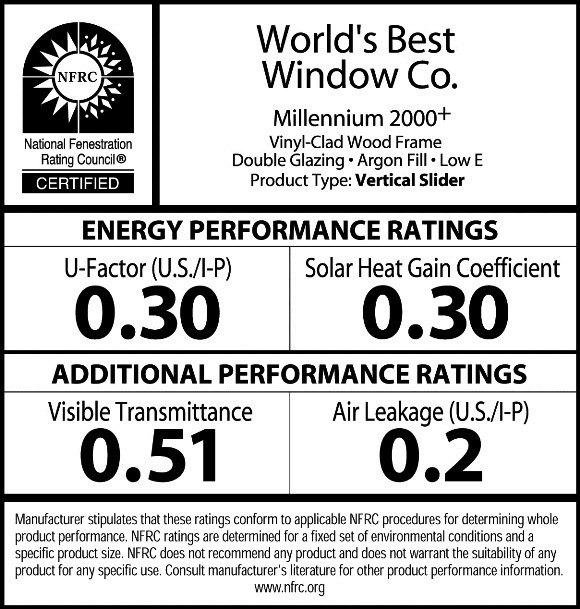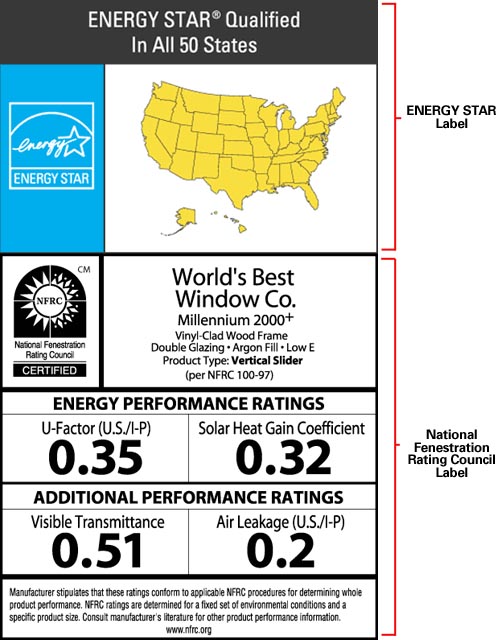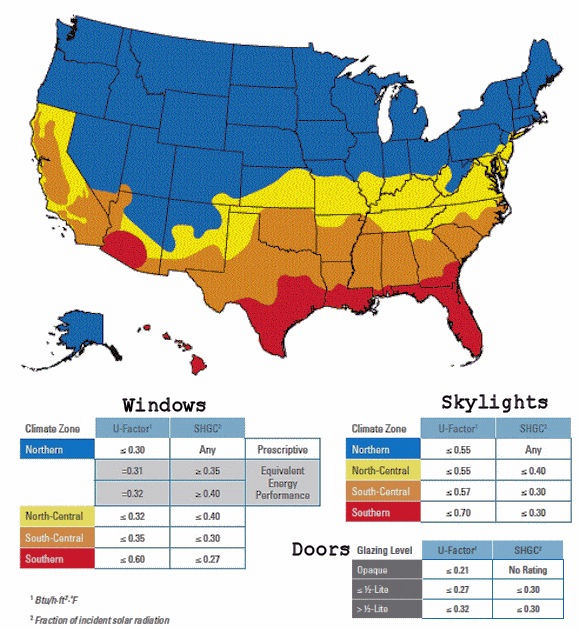 The NFRC or National Fenestration Rating Council basically tests & labels glass products used on buildings like doors, windows, and skylights. The label will include who the manufacturer is, a brief description of the product, and the official ratings for one or more of performance characteristics for that product. The NFRC’s also has an online Certified Products Directory which contains all the information contained on the label to allow one to pre-shop or to verify a label in case it is smudged, missing, or something appears off.
The NFRC or National Fenestration Rating Council basically tests & labels glass products used on buildings like doors, windows, and skylights. The label will include who the manufacturer is, a brief description of the product, and the official ratings for one or more of performance characteristics for that product. The NFRC’s also has an online Certified Products Directory which contains all the information contained on the label to allow one to pre-shop or to verify a label in case it is smudged, missing, or something appears off.
The U-Factor or value is a measurement of how well a product prevents heat from escaping or entering the building. The lower the U-value, the greater a window’s resistance to heat flow and the better its insulating value. Most products rate between 0.20 & 1.20 (U is the inverse of an R-value so a .2 equates to an R5 while a 1.2 has an R value of less than 1.)
The Solar Heat Gain Coefficient (SHGC)measures how well a product blocks radiant heat gain. Technically it is “the fraction of incidental solar radiation admitted through a window (both directly transmitted and absorbed) and subsequently released inward” which is also expressed as a number between 0 and 1. The lower the number is, the less heat is transmitted into the building which is great in hot climates.
Visible Transmittance (VT) measures just how much natural light comes through. It is also expressed as a number between 0 and 1 with the higher the VT rating, the more visible light being allowed in.
Air Leakage (AL)is a measurement of the equivalent cubic feet of air that can pass through a square foot of window area. The lower the AL value, the less air will pass through & correspondingly the heat loss and gain caused by infiltration through cracks in the assembly. This rating is optional & manufacturers are not required to test it.
Condensation Resistance (CR) is expressed as a number between 1 and 100, and rates the ability of a product to resist the formation of condensation on the interior surface of that product. The higher the CR rating, the better that product is at resisting condensation formation. The biggest factors influencing this rating are the U Factor & the spacer bar used between the two panes. If you live in Antarctica &/or interior moistureis an issue in your house (and for some reason you can’t control it) then this rating might be worth something to you. This rating is also optional & manufacturers are not required to test it.
Sample NFRC label for an ENERGY STAR labeled product
- Notice the yellow shading – that is where the label applies
- The label also does not need to be attached together as some manufacturers like to keep them separate
The current ENERGY STAR specs for fenestration products based on location
- As an FYI – the current ES specs exceed the 2009 IECC but in some areas are less than the 2012 IECC which will hopefully be changing soon (For more on this – NorthernStar, DOE, & Windows)
- Just remember the lower the U-Factor & the Air Leakage numbers the better for all types of fenestration’s






Nice post, Sean. I wasn’t aware of the condensation rating and am sure I’ve never seen one. Have you?
Thanks Allison & neither was I, till I was on NTRC’s site – my guess is this is something only a few northern manufacturers use in Anschel’s area or maybe up in Canada. I guess we could always pop into their database & see just how many do it…
Indispensable info Sean … great post.
Nice post, Sean. I wasn’t aware of the condensation rating and am sure I’ve never seen one. Have you?
Thanks Allison & neither was I, till I was on NTRC’s site – my guess is this is something only a few northern manufacturers use in Anschel’s area or maybe up in Canada. I guess we could always pop into their database & see just how many do it…
Indispensable info Sean … great post.